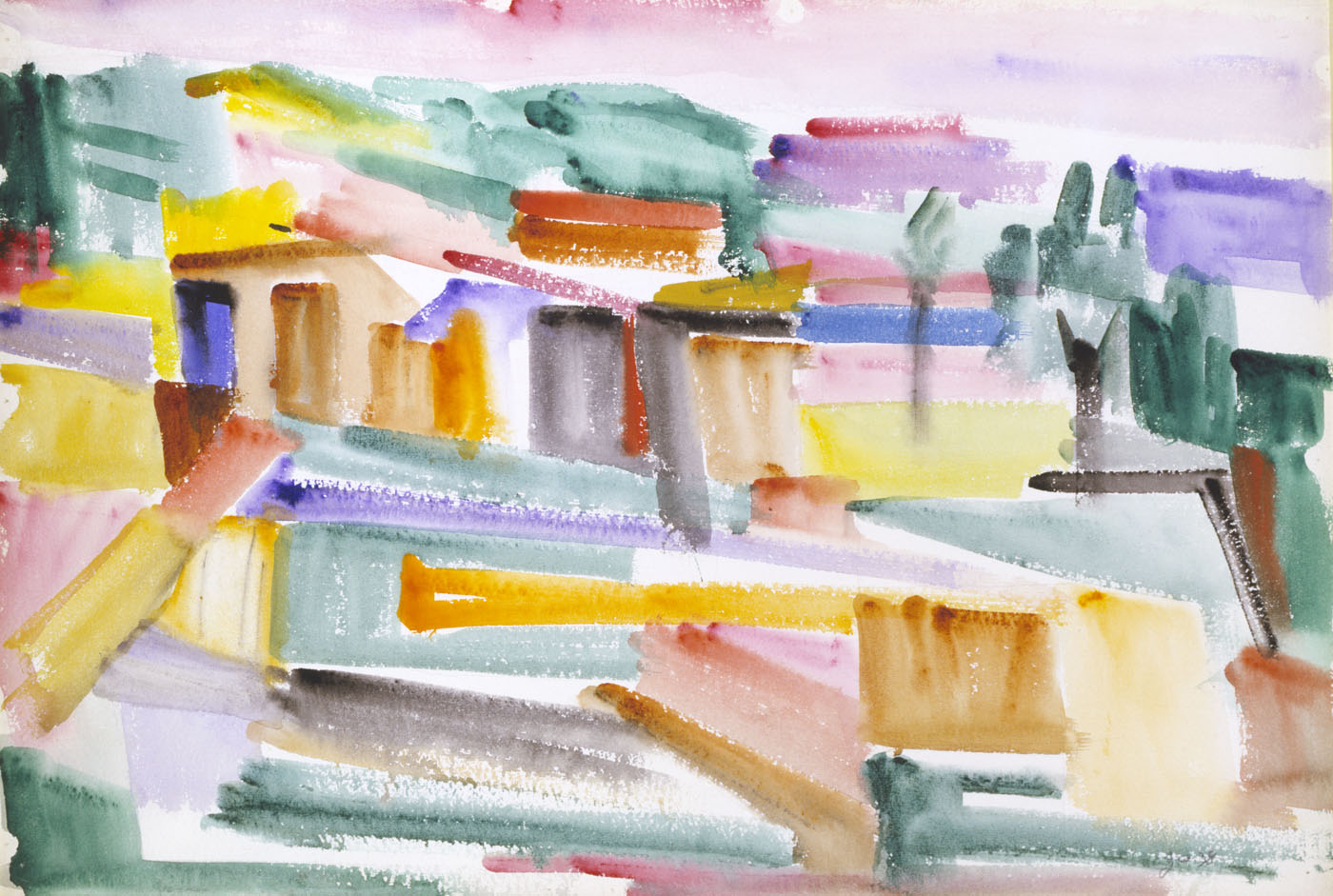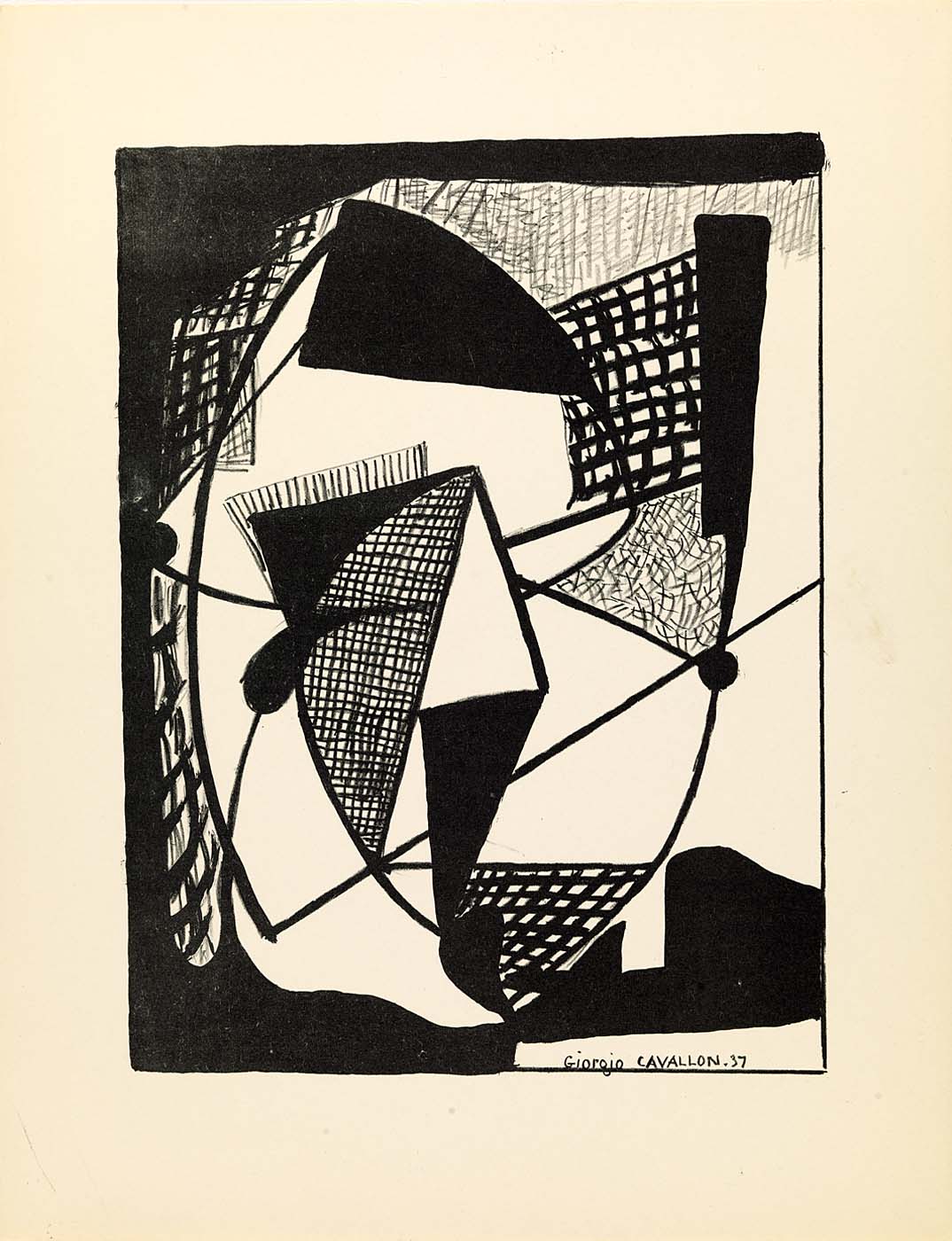Giorgio Cavallon
When he was sixteen, Cavallon immigrated to the United States from Sorio, a small town in the province of Vicenza, Italy. He worked for several years in a factory in Massachusetts while studying art privately, and in 1926, he went to New York.(1) During night sessions at the National Academy of Design, Cavallon took the antique class and worked from casts. After five years at the academy, he left his daytime work as a carpenter and began full-time study for six months. There he met Ilya Bolotowsky, Lee Krasner, Byron Browne, and others. He spent two summers in Provincetown studying with Charles Hawthorne, who taught him to put aside drawing and instead work directly with color. Although Cavallon's painting at this point was still relatively conventional, he already thought of himself as "modern" and began to speak out against the academy's curriculum.
Despite this, Cavallon had become an accomplished painter under the academy's tutelage. In 1929, he received a Louis Comfort Tiffany fellowship that provided living quarters and studio space at the Tiffany estate at Oyster Bay, New York, for a summer. When the Depression struck, Cavallon returned to Italy where he remained for three years. Back in New York in 1933, he studied drawing with Hans Hofmann in exchange for carpentry work. During the summers he returned with Hofmann's class to Provincetown. Among the Hofmann group, he became especially friendly with George McNeil, Harry Bowden, and Albert Swinden. Although he did not yet profess to fully understand abstract art, Cavallon began looking at Picasso, Braque, and JeanHélion. Unlike many of his contemporaries, Cavallon found little inspiration in Picasso; instead he admiredthe structural solidity of Céanne and Hélion. Although in 1935 Cavallon exhibited landscapes done in Italy, he soon moved toward abstraction, initially working from still-life compositions that showed evidence of Céanne's influence. Once determined to put subject matter aside altogether, he moved quickly toward the freely brushed geometric phrasing apparent in Country Scene of 1938. In his paintings of the late 1930s, Cavallon often employed a loose grid structure, which led critics to suggest an interest in Mondrian; yet Cavallon was more concerned with light and evocations of landscape than with the strict formal structure of the Dutch master.
As a Hofmann student, Cavallon was friendly with the organizers of the American Abstract Artists, and he exhibited in the group's annual exhibitions from 1937 until 1957. In 1946, Cavallon joined Charles Egan's gallery and had his first one-man show in eleven years. Although sales were few, Cavallon found himself in a supportive environment and enjoyed arguing art with Willem de Kooning, Jack Tworkov, Franz Kline, Philip Guston, and the other artists who showed there. He became a charter member of the Club—the group of Abstract Expressionists who habituated the Cedar Bar—and participated in the group's Ninth Street Show in 1949. After Egan closed his space, Cavallon exhibited at Stable Gallery, and then at Kootz Gallery in New York. He taught briefly at the University of North Carolina and served as visiting critic in painting at Yale University in 1964.
1. For further information about Cavallon, see Giorgio Cavallon, Paintings 1937–1977(Purchase, N.Y.: Neuberger Museum, State University of New York at Purchase, 1977).
Virginia M. Mecklenburg The Patricia and Phillip Frost Collection: American Abstraction 1930–1945 (Washington, D.C.: Smithsonian Institution Press for the National Museum of American Art, 1989)
Selected Images of Giorgio Cavallon
Objects at Archives of American Art (2)


